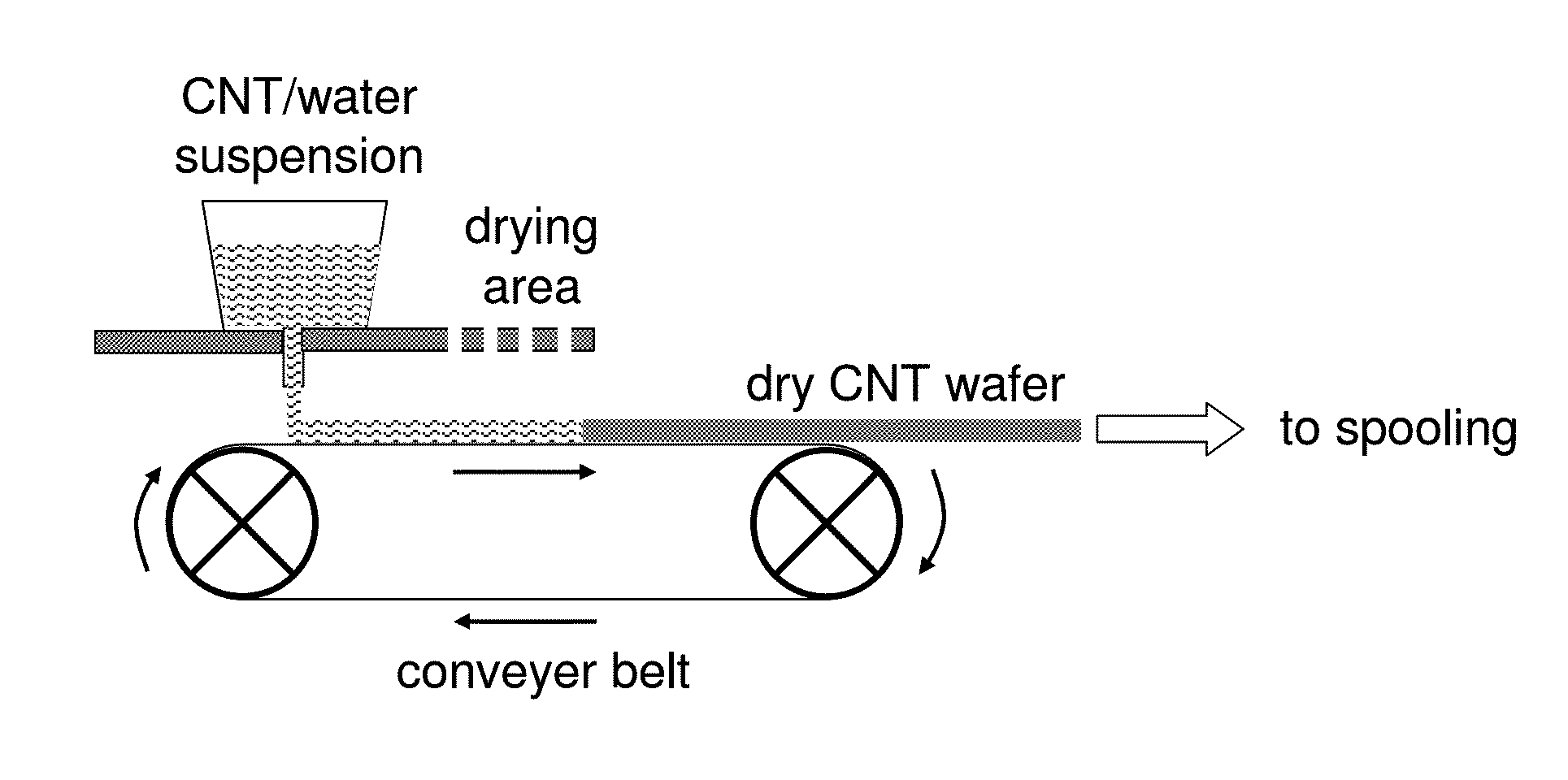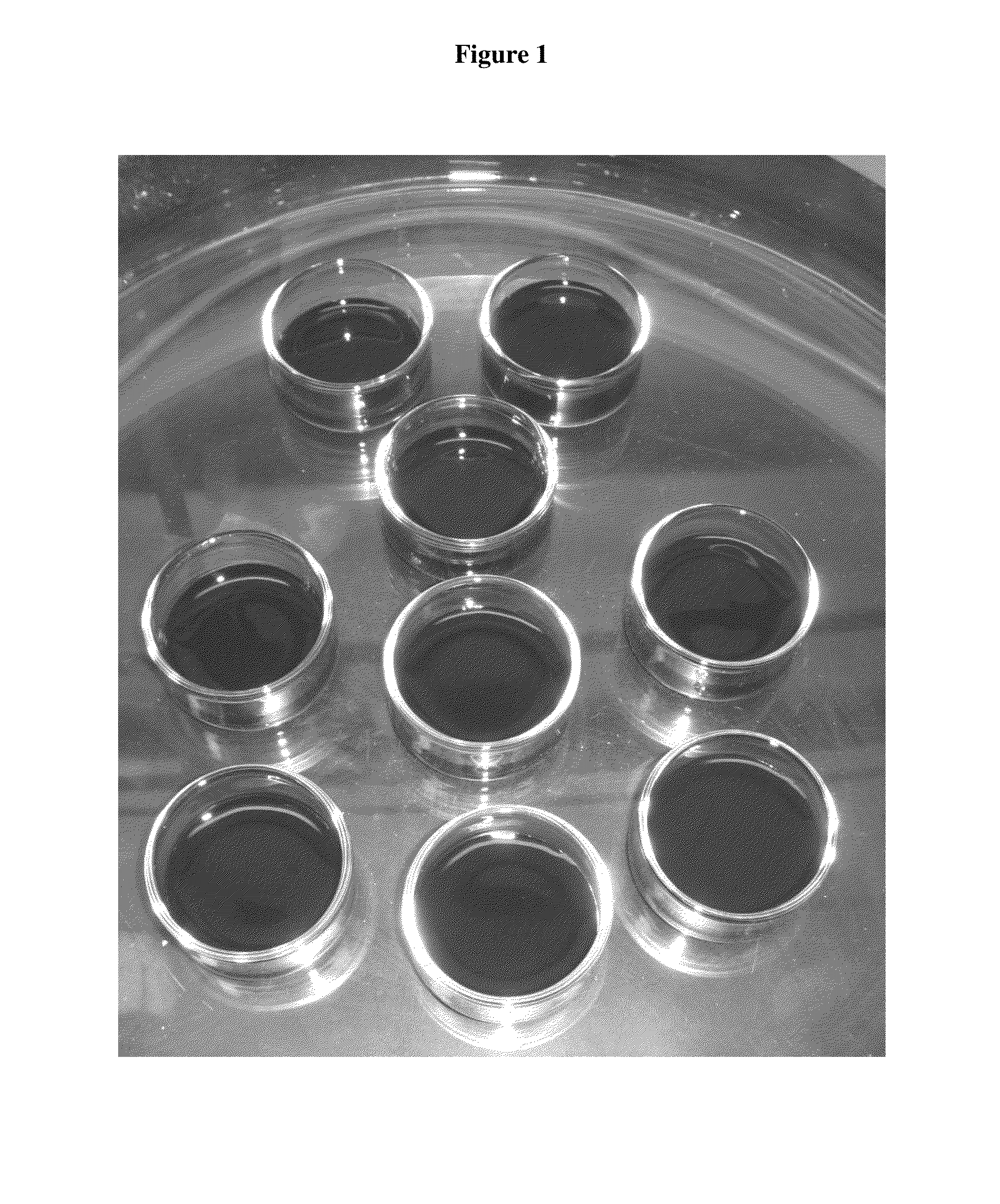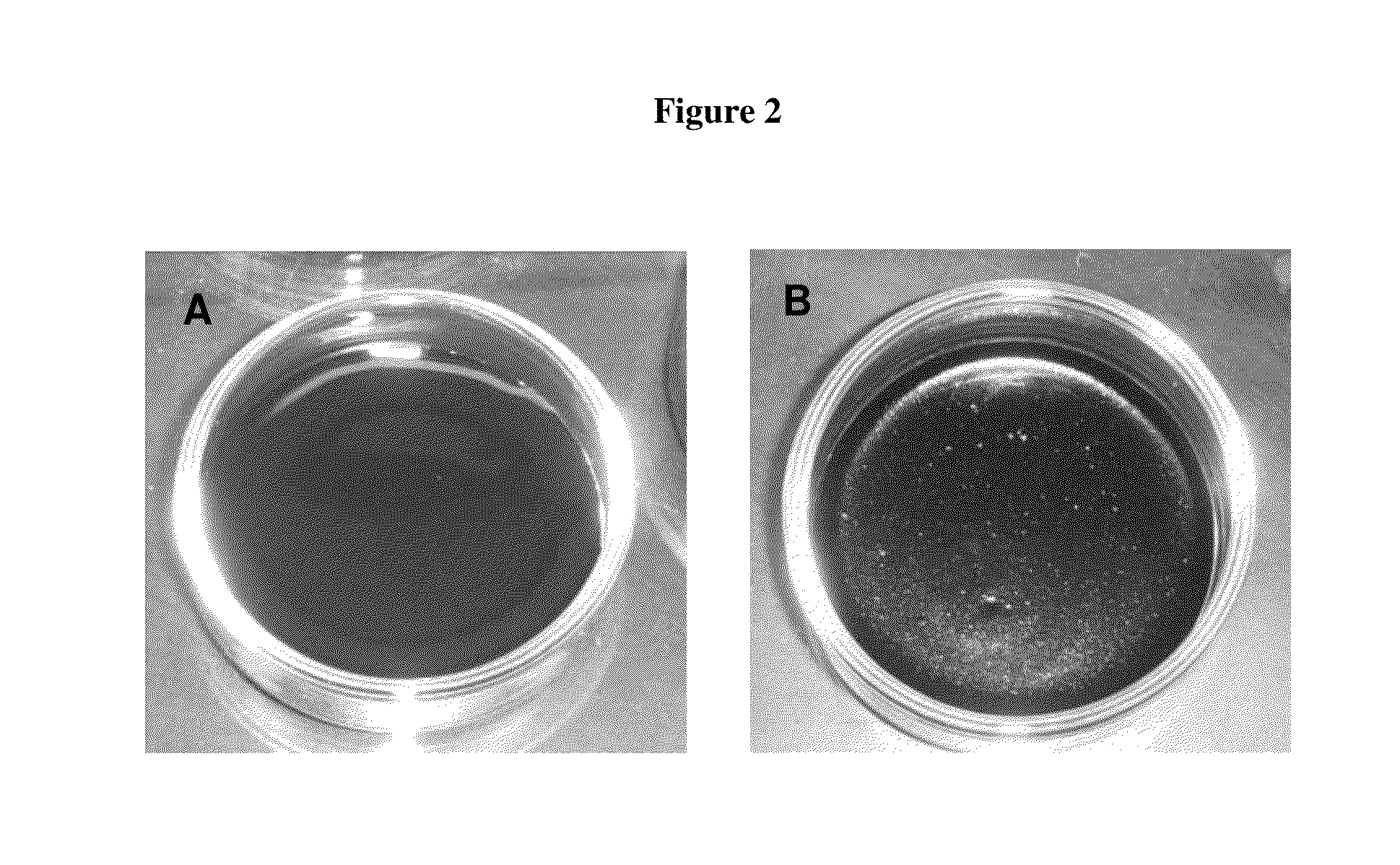Method of making cohesive carbon assembly and its applications
a carbon and carbon technology, applied in the preparation of carboxylic compounds, cell components, transportation and packaging, etc., can solve the problems of anisotropic and largely unidirectional properties of the assembly, adversely affecting the electrical properties of the structure, and limited to the scale of the starting cnt fores
- Summary
- Abstract
- Description
- Claims
- Application Information
AI Technical Summary
Benefits of technology
Problems solved by technology
Method used
Image
Examples
example 1
Fabrication of Free Standing CNT Wafer from Aqueous Dispersion Using Sonication and Microfluidization
Preparation of Aqueous CNT Dispersion
[0117]As-received amide-functionalized SWCNT (P9 SWNT, CSI Inc., Riverside, Calif.) was ground by mortar and pestle. Three masses of the ground material, 240 mg, 200 mg, and 160 mg, were separately combined with 40 g each of de-ionized (DI) water in a beaker, to create CNT / water dispersions with ratios (mg / g) of 6:1, 5:1, and 4:1 respectively. To facilitate dispersion of the CNT loadings in water, each mixture was sonicated for 2 cycles of 10 minute duration (total 20 minutes) using a probe sonicator (V600, Sonics & Materials, Inc., Newtown, Conn.). The probe tip was directly immersed into the CNT / water mixture for sonication. The suspension became black after 10 seconds of sonication.
[0118]Immediately after sonicating, the resulting CNT / water dispersions were passed once through a microfluidizer (M-110Y, Microfluidics Corporation, Newton, Mass.),...
example 2
Fabrication of Free Standing CNT Wafer from Aqueous Dispersion Using Refluxing and Microfluidization
Preparation of Aqueous CNT Dispersion
[0123]Approximately 400 mg of carboxyl-functionalized SWCNT (P3 SWNT, CSI Inc.) were combined with 80 mL of DI water in a round bottom flask to create a CNT / water dispersion with ratio of 5:1 (mg / g). The CNT / water mixture was refluxed in boiling water while stiffing for 4 hours. The resulting dispersion was divided into two 40-mL portions, and each of these was passed through the microfluidizer one time. For each 40 mL portion, the primary and three residual dispersions (R1-R3) were collected as the effluent streams by flushing with DI water as described in Example 1. CNT concentrations in the residual dispersions were determined by casting fixed volumes of each into dishes and then weighing the resulting assemblies after completely evaporating the water. The CNT concentrations of dispersions R1, R2, and R3 were determined to be 2.0, 0.8, and 0.4 m...
example 3
Fabrication of Adherent CNT Assemblies on Aluminum Substrates
[0126]Aqueous CNT (CSI Inc. P3 SWNT) dispersions were prepared via the sonication-microfluidization route (Example 1) and the refluxing-microfluidization route (Example 2).
[0127]For the aqueous CNT dispersion prepared according to Example 1, residual dispersions R1, R2, and R3 were collected after microfluidization, as described in Example 2. About 5 ml of the first (R1) residual dispersion were cast directly into an aluminum foil pan 4 cm in diameter, which had been etched with dilute NaOH solution for 2 minutes to promote adhesion of the CNT assembly. The etched Al pan was lined along its inside periphery with tape to expose only the base for CNT contact and adhesion. To another similarly treated Al pan, 5 mL of R2 CNT / water dispersion were cast. Water was allowed to evaporate from the cast dispersions under ambient conditions of temperature and pressure. Evaporation completed in about three days.
[0128]For the aqueous CN...
PUM
| Property | Measurement | Unit |
|---|---|---|
| electrical sheet resistance | aaaaa | aaaaa |
| porosity | aaaaa | aaaaa |
| density | aaaaa | aaaaa |
Abstract
Description
Claims
Application Information
 Login to View More
Login to View More - R&D
- Intellectual Property
- Life Sciences
- Materials
- Tech Scout
- Unparalleled Data Quality
- Higher Quality Content
- 60% Fewer Hallucinations
Browse by: Latest US Patents, China's latest patents, Technical Efficacy Thesaurus, Application Domain, Technology Topic, Popular Technical Reports.
© 2025 PatSnap. All rights reserved.Legal|Privacy policy|Modern Slavery Act Transparency Statement|Sitemap|About US| Contact US: help@patsnap.com



